100-mm field gun model 1944 of the year (BS-3)
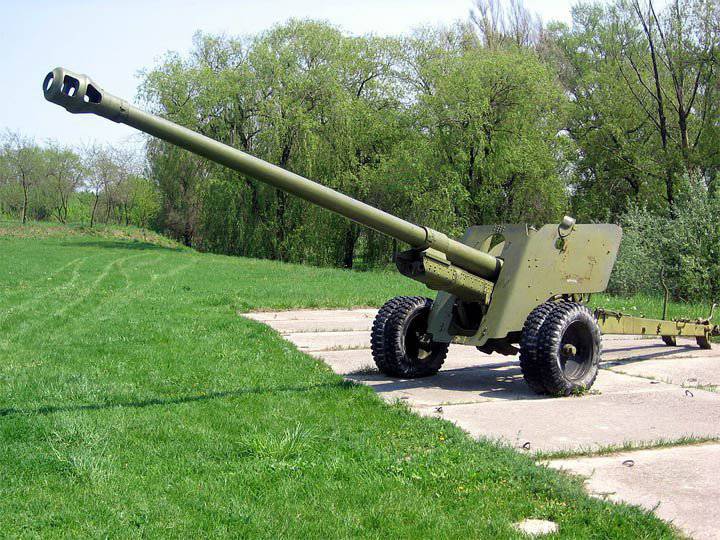
In the spring of 1943, the VG In his memorandum addressed to Stalin, Grabin proposed, along with the resumption of production of the 57-mm anti-tank ZIS-2, to begin designing the 100-mm cannon with a unitary shot, which was used in the B-34 naval guns.
Interestingly, the "ancestor" of the Soviet naval and land guns caliber 100-mm was the Italian naval universal artillery system Minizini.
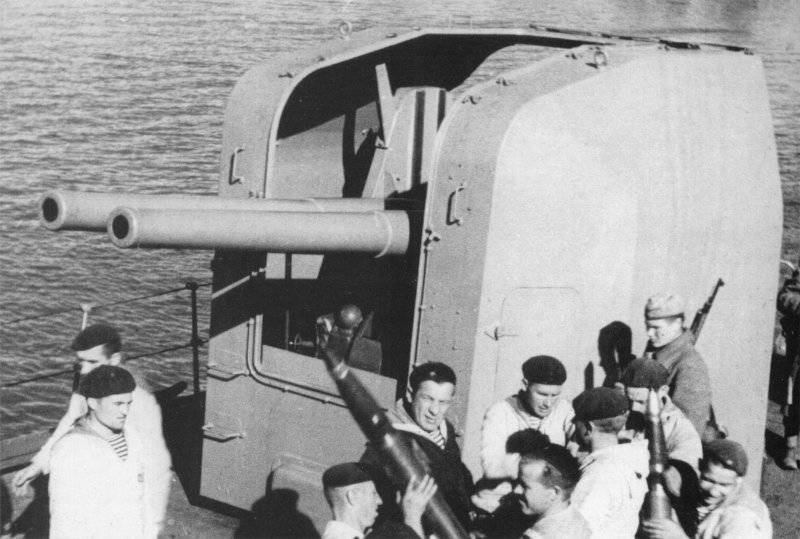
In the middle of the USSR 30-s for armament of Svetlana-type cruisers: Red Caucasus, Red Crimea and Chervona Ukraine, 10 100-mm double-barreled rifles were developed by engineer-general Eugenio Minizini in Italy.
The need to create a 100-mm towed gun was motivated by the appearance of heavy Germans in 1942 tanks Panzerkampfwagen VI "Tiger I" Ausf E, with a frontal armor thickness of 100 mm, as well as the possible emergence of even more protected tanks and self-propelled guns.
In addition to anti-tank missions, such a weapon was essential for the destruction of field fortifications and counter-battery firing when the Red Army proceeded to offensive operations. Since the existing 107-mm divisional gun of the 1940 model of the year (M-60) was discontinued, and the 122-mm 1931 / 37 model cannon (A-19) was too heavy and had a low rate of fire.
In September 1943, the first prototype was sent to the test site. Preliminary tests have shown that the new 100-mm gun does not meet the requirements of reliability and is unsafe in operation. After making a number of improvements and changes in April 1944, military tests of four guns began. They ended on May 2, the admissions committee recommended adopting the weapon into service, subject to the elimination of a number of flaws.
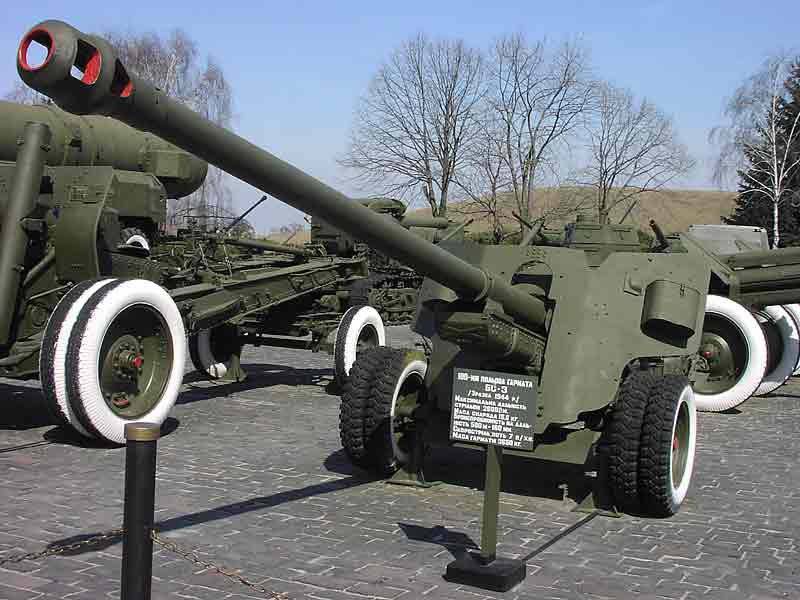
By decree of the State Defense Committee of 7 in May 1944, the gun was put into service under the name “100-mm field gun mod. 1944 g. ”, Its factory index was BS-3. It was under this designation that this instrument became widely known.
The phrase "field gun" appeared for the first time in the designation of the instrument created in the Soviet era. The officers of the Main Artillery Directorate for a long time decided how to name the new gun. As a divisional 100-mm gun was too heavy. And as an anti-tank, it did not satisfy a number of conditions at that time. Moreover, the creator of this instrument, VG Grabin never considered the BS-3 anti-tank system, which, apparently, was reflected in the name.
When creating a BS-3, the designers of the design bureau under the direction of VG Grabin widely used their experience in creating field and anti-tank guns, and also introduced a number of new technical solutions.
For the sake of high power, weight reduction, compactness and high rate of fire, for the first time, a wedge semi-automatic shutter and a two-chamber muzzle brake with 60% efficiency were used for the first time.
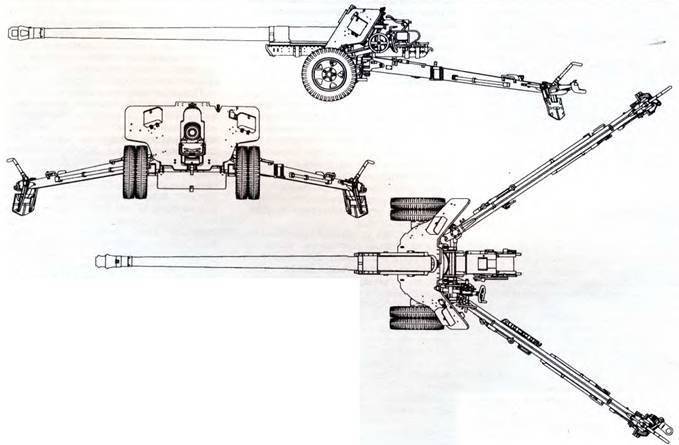
The wheel problem was originally solved; for lighter guns, wheels from GAZ-AA or ZIS-5 were usually used. But for the new gun they did not fit. The wheels of the five-ton YAZ were too heavy and large. Then the Spark wheel was taken from GAZ-AA, which allowed it to fit into the specified weight and dimensions. The wheels from the GAZ-AA truck had a reinforced rubber tire and a special wheel hub. Equipped with such wheels, the guns could be transported by mechanical ping at fairly high speeds.
In the spring of 1944, BS-3 was put into mass production. But the pace of production in connection with the workload of factories were not high. Until the end of World War II, the industry supplied the Red Army with only about 400 guns.
Due to the presence of a wedge gate with a vertically moving wedge with semi-automatic, the location of the mechanisms of vertical and horizontal pickup on one side of the gun, as well as the use of unitary shots, the firing rate of the gun is 8-10 shots per minute. Shooting from a cannon was carried out with unitary shots with armor-piercing tracer shells and high-explosive fragmentation grenades.
Technical characteristics of BS-100 3 mm field gun:
The mass of the gun in the combat position - 3650 kg.
Barrel caliber - 100 mm.
Barrel length - 5960 mm / 59,6 calibers.
The height of the line of fire - 1010 mm.
The number of grooves - 40.
Gun dimensions in the stowed position:
- length - 9370 mm;
- height - 1500 mm;
- width - 2150 mm;
Firing range:
- OF-412 and OFS - 20 thousand m;
- RP-32 - 20,6 thousand m;
- direct shot - 1080 m.
The rate of fire is up to 10 shots per minute.
The angle of horizontal guidance - 58 degrees.
The angle of vertical guidance is from -5 to + 45 degrees.
Ammunition - BS, DS, OS, OFS.
Charging - unitary.
Sights:
- OP1-5 - optical sight;
- С71А-5 - mechanical sight (panorama).
The maximum towing speed is 50 km / h.
Calculation - 6 people.
The 100-mm BS-3 proved to be a very effective anti-tank weapon, as demonstrated by shooting at the landfill on the captured Tiger and Panther tanks. For excellent armor penetration, ensuring the defeat of any enemy tank, soldiers, front-line soldiers named it "St. John's Wort".
An armor-piercing tracer with an initial speed of 895 m / s at a distance of 500 m at a meeting angle of 90 ° pierced armor with a thickness of 160 mm. Direct shot range was 1080 m.
However, the role of this weapon in the fight against enemy tanks is greatly exaggerated. By the time it appeared, the Germans practically did not use masses of tanks. Released BS-3 during the war was in small quantities and could not play a significant role. In addition, most of the guns delivered to the troops were usually located far from the “front line”, being a “special anti-tank reserve” in case of the breakthrough of large groups of enemy heavy tanks. Moreover, the guns of the first release had only aiming devices for firing from closed positions - the panorama C-71А-5. Optical sight OP1-5 for direct fire began to be mounted only a couple of months after the start of mass production of guns. However, soon all the guns were equipped with “direct fire” sights.
At the final stage of the war, the 98 BS-3 were attached as a means of strengthening five tank armies. The gun was in service with light artillery brigades 3-x regimental composition (forty-eight 76-mm and twenty 100-mm guns).
The RVGK artillery as of 1 in January 1945 had 87 BS-3 guns. At the beginning of the 1945 of the year, in the 9 of the Guards Army, as part of three rifle corps, one cannon artillery regiment of BS-20 3 was formed.
For comparison, PT SAU SU-100 with a gun of the same caliber D-10С was released in wartime in an amount of about 2000. Naturally, the SU-100 operating on the battlefield in the same order of battle with tanks, the chances of meeting enemy tanks were much higher and these self-propelled guns made a much greater contribution to the fight against enemy tanks.
The BS-3 had a number of flaws that hampered its use as an anti-tank. When firing, the gun jumped heavily, which made the gunner’s work unsafe and knocked down the aiming installations, which, in turn, led to a decrease in the practical rate of aimed fire — qualities for a very important anti-tank gun.
The presence of a powerful muzzle brake with a small height of the line of fire and flat trajectories characteristic of shooting at bronzelem, led to the formation of a significant smoke-dust cloud that unmasked the position and blinded the calculation.
The mobility of a weapon with a mass over 3500 kg left much to be desired, transportation by the forces of calculation on the battlefield was almost impossible.
If towing 45-mm, 57-mm and 76-mm guns was carried out by horse teams, cars GAZ-64, GAZ-67, GAZ-AA, GAZ-AAA, ZIS-5 or Dodge WC cars delivered from the middle of the war on lend-lease. -51 ("Dodge 3 / 4"), then towing BS-3 required tracked tractor, in extreme cases, all-wheel drive trucks Studebaker US6.
During the fighting at the final stage of the war, the BS-3 was used mainly as a cannon for firing from closed positions and for the counter-battery struggle due to its high range of fire.
Sometimes she fired direct fire at the enemy fortifications. Cases of the use of BS-100 3-mm guns against armored vehicles were very rare.
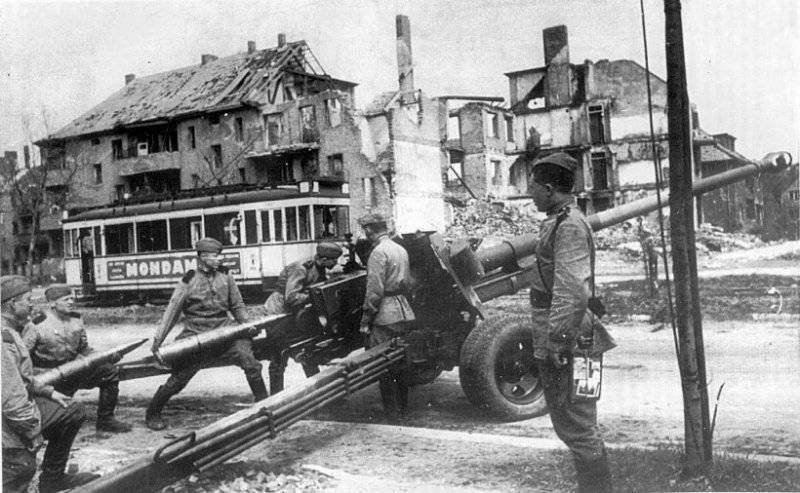
To give an unambiguous assessment of this tool is quite difficult. On the one hand, the BS-3 confidently hit any heavy German tank, and was quite effective when firing from closed positions. On the other hand, the need for such a tool was not obvious. By the time the BS-3 was adopted, the Pancervafe ridge was broken, the Red Army already had sufficiently effective 57-mm anti-tank guns ZIS-2, SAU SU-100 and T-34-85 tanks. In extreme cases, 122-mm A-19 cannons and 152-mm howitzer ML-20 cannons, as well as heavy ACS IMS-122 and IMS-152, could be used to deal with the enemy's few heavy tanks.
A more popular 85-mm anti-tank gun that could roll onto the battlefield by the forces of calculation would be more compact, simpler and cheaper to manufacture. And in the case of the use of an armor-piercing sabot projectile, according to the characteristics of armor penetration, it was not inferior to 100-mm BS-3.
But the development of such a tool was delayed, and it entered service after the war. It was created under the direction of chief designer F. F. Petrov X-NUMX-mm gun D-85, adopted in 44 year. Subsequently, it was decided to use the 1946-mm D-85 as a divisional to replace the ZIS-44, and the fight against the tanks assigned to more powerful artillery systems and ATGM.
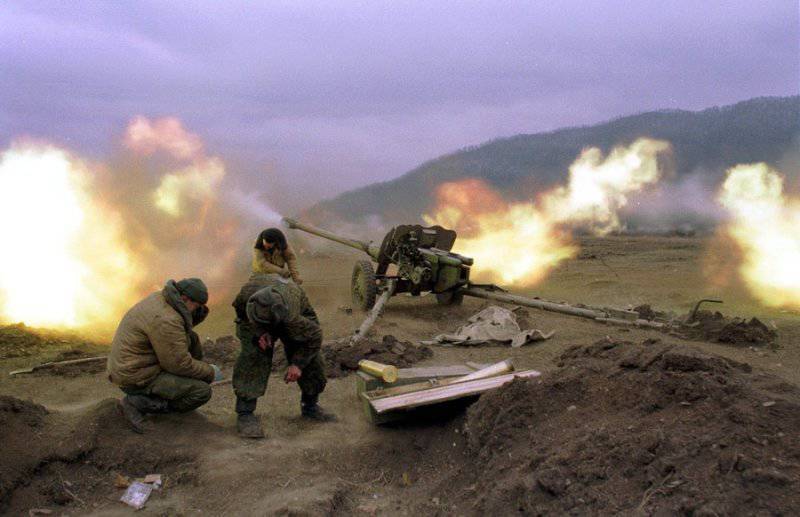
In this capacity, the D-44 gun was used in many conflicts, including in the CIS. The last case of combat use was noted in the North Caucasus, during the “counter-terrorist operation”. In the military, the D-44 experienced a lot of BS-3. Yielding to the latter in terms of the power of the projectile and the firing range, the 85-mm gun was more than 2 times lighter, easier to maintain and more convenient.
Prior to the cessation of production in 1951, industry had delivered 3816 BS-3 guns to the troops.
In the post-war years, the BS-3 cannon was subjected to a small modernization, which primarily concerned ammunition and sights.
In the first post-war years, an AT-L tractor and a ZIS-151 vehicle were usually used to tow a gun. In the middle of the 50's, the light semi-armored tracked artillery tractor AT-P became the main means of thrust. The MT-LB was also used as a tractor.
Prior to the start of the 1960, the BS-3 guns could fight any Western tanks. However, the situation changed later: the BS-3 cannon-piercing shells were unable to penetrate the frontal armor of the turret, as well as the upper frontal armor of the British Chieftain tanks and the American M-48А2 and М-60. Therefore, urgently developed cumulative and sub-caliber shells were developed and adopted. Sub-caliber shells were able to pierce any armor of the M-48-2 tank, as well as the towers of the Chieftain and M-60 tanks, but did not penetrate the upper frontal armor of these tanks. Cumulative shells were able to penetrate any armor of all three tanks.
However, after the appearance of new anti-tank guns: 85-mm D-48 and 100-mm smooth-bore T-12 and MT-12, the BS-3 cannon was gradually withdrawn from the troops and transferred to “storage”. A significant number of BS-3 was delivered abroad, where they were popular due to the unification of ammunition with the guns of widespread Soviet T-54 / T-55 tanks.
Ammunition 100-mm guns BS-3 included the following ammunition:
High-explosive fragmentation shell OF-412:
Shots - 3UOX412 / 3UOX412U.
Projectile weight - 15,6 kg.
The mass of explosive - 1,46 kg.
Initial speed - 900 m / s.
Direct shot range - 1100 m.
The maximum firing range - 20 th. M.
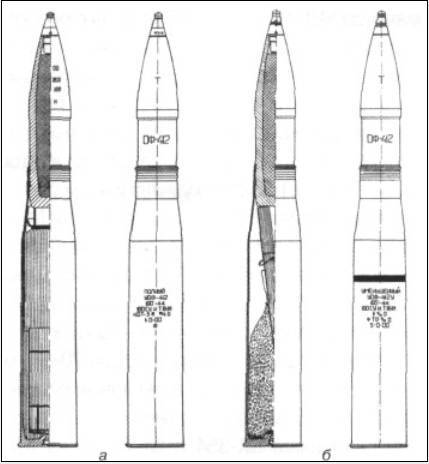
100-mm unitary shots with high-explosive fragmentation projectiles RP-412: a - with a full charge; b - with a reduced charge
Fragment grenade O-412:
Shot - WQ-412.
Projectile weight - 15,94 kg.
Initial speed - 898 m / s.
The maximum firing range - 21,36 th. M.
Direct shot range - 1,2 th. M.
Armor-piercing shells of BR-412, BR-412B, BR-412D:
Выстрелы — УБР-412/3УБР3/3УБР412Д.
Projectile weight - 15,088 kg.
Explosive weight - 0,06 kg.
Initial speed - 895 m / s.
Direct shot range - 1040 / 1070 m.
The maximum firing range - 4 th. M.
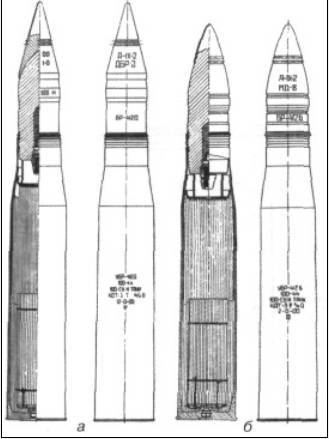
100-mm unitary shots with armor-piercing-tracer shells: a - with a BR-412D projectile with an armor-piercing and ballistic tip, b - with a BR-412B projectile with a ballistic tip
Armor-piercing piercing projectiles 3BM25 and 3BM8:
Shot - 3UBM11 and 3UBM6.
Projectile weight - 5,7 kg.
Cumulative armor-piercing shells 3БК17, 3БК5:
Shot - 3UBK9 and 3UBK4.
High-explosive fragmentation shell OF-32 (1980-s):
Shot - 3UOF10 / 3UOFXNNUMX.
Projectile weight - 15,6 kg.
The mass of explosive is 1,7kg.
Direct shot firing range - 1100 m.
The maximum firing range - 20600 m.
Controlled anti-tank missile 9М117 complex "Bastion":
Shot - 3UBK10-1.
Firing range - 100-4000 meters.
Penetration: under 60 degrees - 275 mm, at an angle 90 degrees - 550 mm.
In the 80-ies the gun passed the last, in my opinion, completely unjustified for this clearly hopelessly outdated artillery system by that time. The BS-100 3-millimeter cannon received a guided anti-tank 9М117 (Bastion missile system), its effective firing range left to 4000 meters and penetrated the normal 550-mm armor. But by the time the troops of the BS-3 guns had already remained a bit, and it can be said that the funds for the experimental design work on the modernization were wasted.
Currently, the 100-mm guns of the BS-3 in most countries where they were delivered, have already been withdrawn from the armament of the combatant units. In Russia, the BS-3 guns, as of 2011, consisted of coastal defense weapons in service with the 18 machine-gun and artillery division deployed in the Kuril Islands, and some were stored.
Based on:
http://www.militaryfactory.com
Shirokorad A. B. The genius of the Soviet artillery. Triumph and tragedy of V. Grabin. M .: AST, 2003.
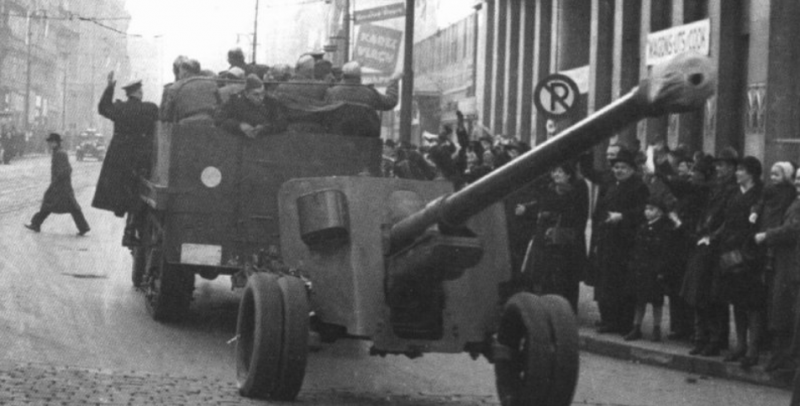
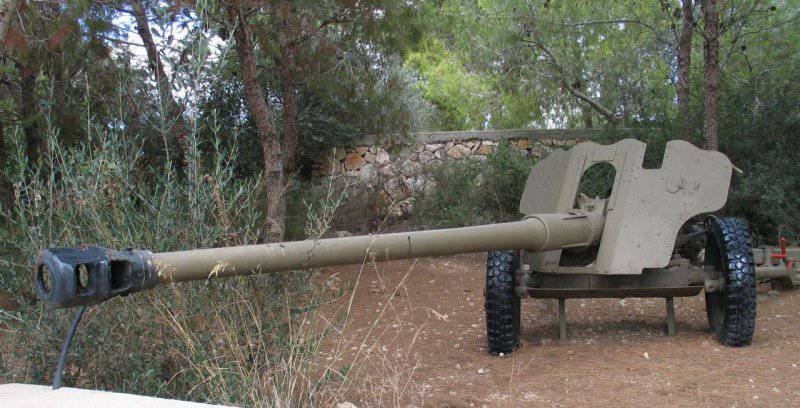
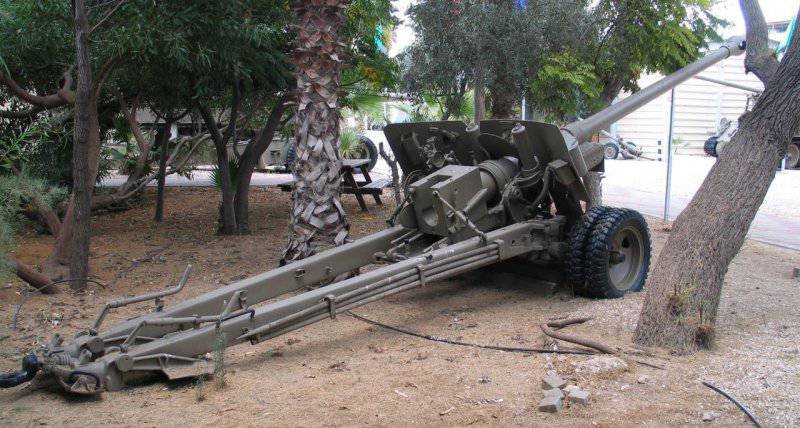
Information